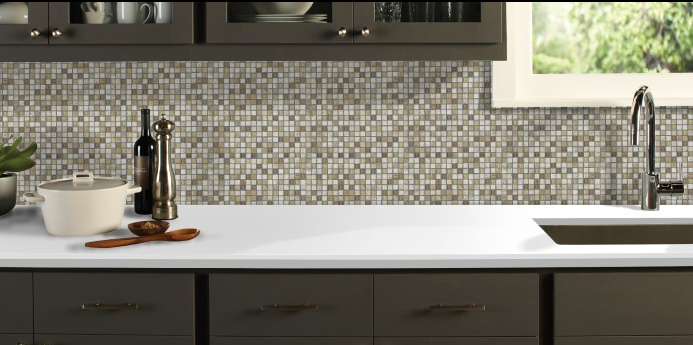Although it is possible to install tile as a DIY project, we recommend hiring a professional installer to do the work. Tile installations can be labor intensive and there are a number of specialized tools required to complete the installation. A tile installation can be messy and sometimes a lengthy process. Knowing what to expect during your tile installation will make the entire process go faster and eliminate any surprises.

A majority of installations take place in areas where tile already exists, so removing your old flooring is the first step in the installation process. This can be easy, though if your previous installer did a good job, then removing the old tile can be a messy and time-consuming process. Check with your installer before you begin to see if removal and disposal of the old flooring is included in your installation price.
The next step in the installation is ensuring the subfloor is clean and prepped for installation. Concrete subfloors typically only require cleaning and possibly minor crack repairs prior to a new installation. Newly poured concrete subfloors will require proper curing time. (Speak to an installer about this) Any other type of subfloor will require the installation of concrete backer board. It is important to note that the backer board may raise the height of your flooring and require different transitions between rooms. Prepping your floor may involve a lot of stripping, sanding, dust, and loud power tools. This process will likely be messy and noisy, but in the end, should be worth the inconvenience when you prepare to enjoy a lifetime of gorgeous tile or stone floors.
Once the subfloor is ready, the installation crew will begin spreading mortar and grout as they lay the tile. The installation team will also need an area outside, preferably covered, to cut or trim your tile. This process typically requires the use of a wet saw, which is somewhat noisy and can cause a small mess. Once the grout goes down and your tiles are set in place, your installation is nearly finished!
It is important to remember that tile installations are not truly done until a few days after your team leaves your home. New tile installations need time to cure and solidify. Floor tiles should not be walked on for at least 48 hours after the tiles are laid, and any bathroom or kitchen installs should remain completely moisture free for a couple of days so the grout can completely dry.





